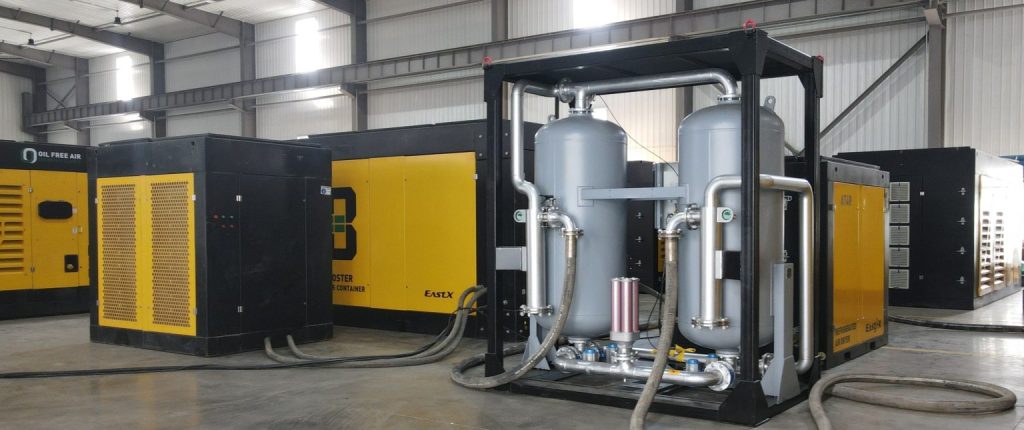The oil cooler (also known as the heat exchanger) is a critical component of a screw air compressor. It ensures that the lubricating oil stays within a safe temperature range, preventing overheating and shutdowns.
However, over time, the cooling performance may deteriorate, leading to rising oil temperatures and system trips. Most of these issues stem from blockages in the cooler. Here are the three most common causes:
1. Dust Build-Up on Fins
When not cleaned regularly, ambient dust accumulates on the cooler’s surface, forming a thick layer that blocks heat dissipation. This is especially problematic in dusty environments like cement or metalworking plants.
2. Oil and Debris Contamination
If compressor fittings leak oil slightly over time, dust and oil mix together, forming a sticky layer that clogs the cooler fins. In textile or wood industries, floating fibers also cling to the cooler, further reducing heat transfer efficiency.
3. Carbon Deposits Inside the Cooler
Using low-quality lubricant oil or operating the compressor in consistently high-temperature conditions leads to carbon buildup inside the oil cooler. These deposits restrict oil flow and degrade cooling performance, increasing the risk of overheating and automatic shutdowns.
Maintenance Tips
- Regularly inspect and clean the cooler’s surface to remove dust and fibers
- Use degreasing agents or pressure washers to clean oil-contaminated surfaces
- Replace with high-quality lubricants to prevent carbon deposits
- In dusty environments, shorten maintenance intervals and schedule deep cleaning
Maintaining a clean, efficient cooler is vital for compressor longevity and energy efficiency. Proactive maintenance reduces downtime and keeps operations running smoothly.


